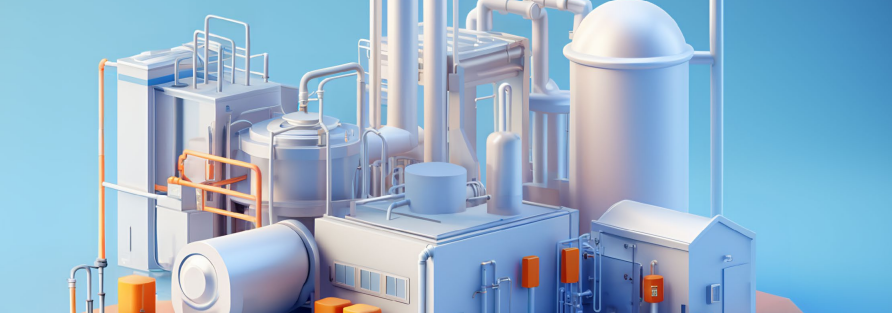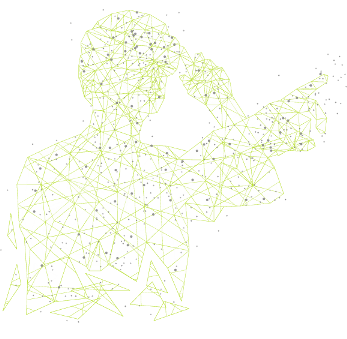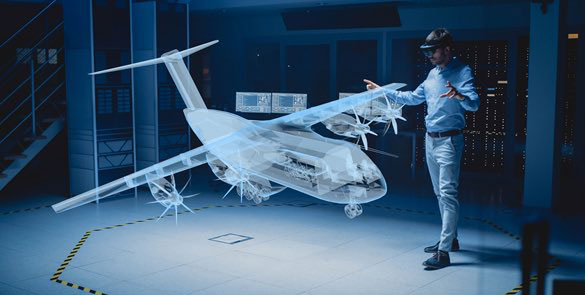Exploring the Industrial Metaverse: A Roadmap to the Future
Briefing Paper by the World Economic Forum
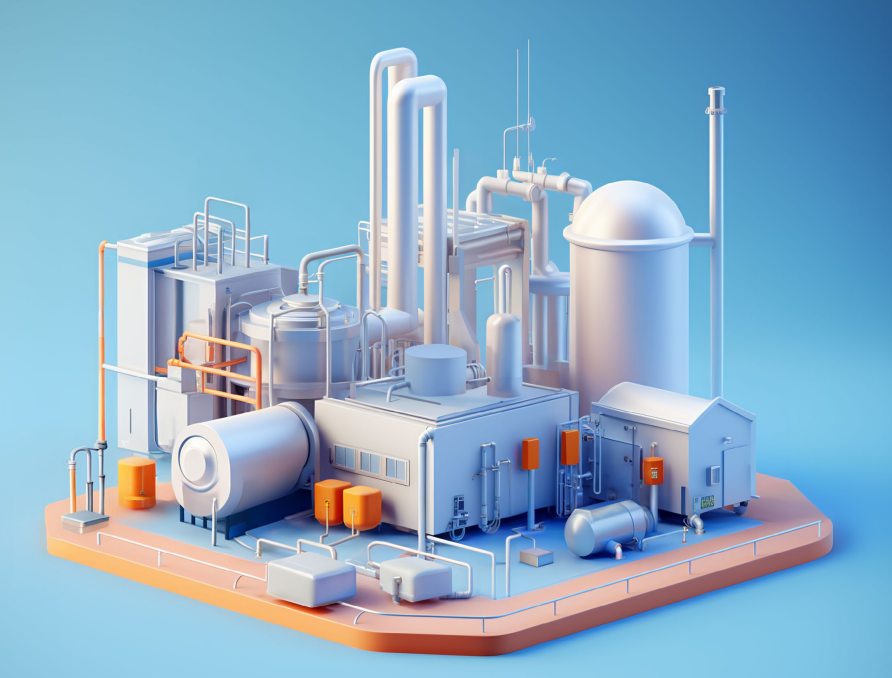
This briefing paper on “Exploring the industrial metaverse” does a great job of presenting the high-level concepts behind the Industrial Metaverse, it’s current state, vision & roadmap and actions for companies. The roadmap focuses on four key dimensions: market, use cases, technologies and resources. In my summary, I focus more on the Technology & Use cases aspects.
Recommendations for Industrial Companies
- Market: Assess the economic, social, and environmental value of the industrial metaverse.
- Use cases: Start experimenting with initial PoCs. Later integrated into a wider industrial metaverse platform.
- Technologies: Consider building infrastructure that ensures interoperability.
- Resources: Education, upskill & reskill employees around a shared vision to promote cross-disciplinary collaboration
What is the Industrial Metaverse?
- Set of metaverse applications designed for industrial users
- Next evolutionary step of digital twins. Extends beyond a digital replica of machinery or plant by adding XR-powered human interaction and collaboration layers.
- A persistent 3D platform implemented across an industrial organization, serving as a digital reflection of the organization in its operational environment. Integrates processes, materials, machines and people in a bi-directional flow between the real and virtual worlds.
- Builds on enabling technologies like XR, robotics, sensors, IoT, AI and development tools apart from underlying IT infrastructure.
Foundations & Applications
- Technology stack
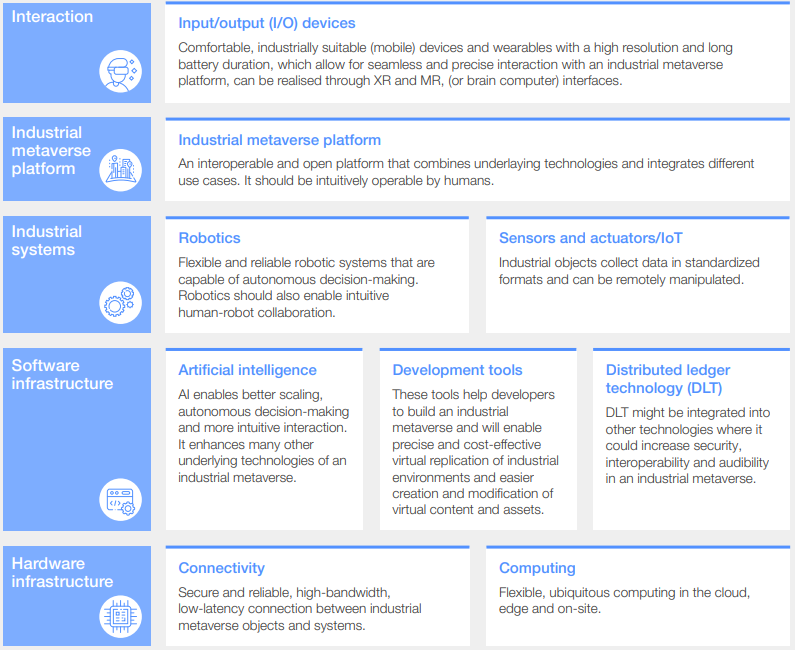
- Use cases
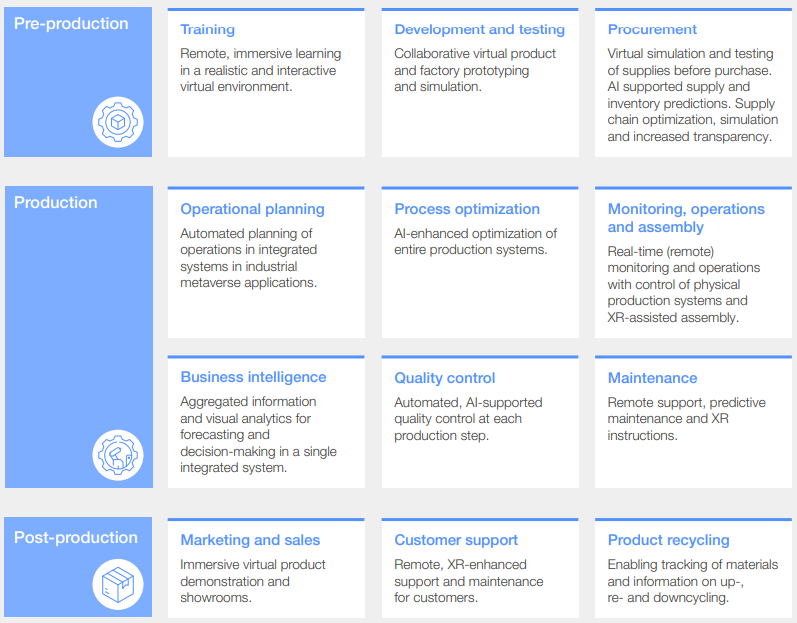
Current State
- Initial proof-of-concepts such as VR for safety & operational training and MR for customer experience / showrooms. Pilot projects lack integration into existing software infrastructure or an industrial metaverse platform.
- Almost all companies collecting data, but struggle with interpreting them due to incompatible formats.
- Many companies overwhelmed by the complexity and speed of innovation in the industrial metaverse. A clear vision, strategy and governance processes for the industrial metaverse are missing.
Vision
- Open ecosystem platform built on defined and shared standards.
- Use cases will evolve into an integrated platform enabling multiple and increasingly complex appliations, including virtual design, testing, production planning, operations and monitoring & maintenance. Use cases accessed immersively and intuitively.
- AI will be a significant enabler, elevating other technologies to new heights.
- Industry will establish a shared, company-specific vision, strategy and flexible governance mechanisms for responsible and sustainable implementation.
Future & Roadmap

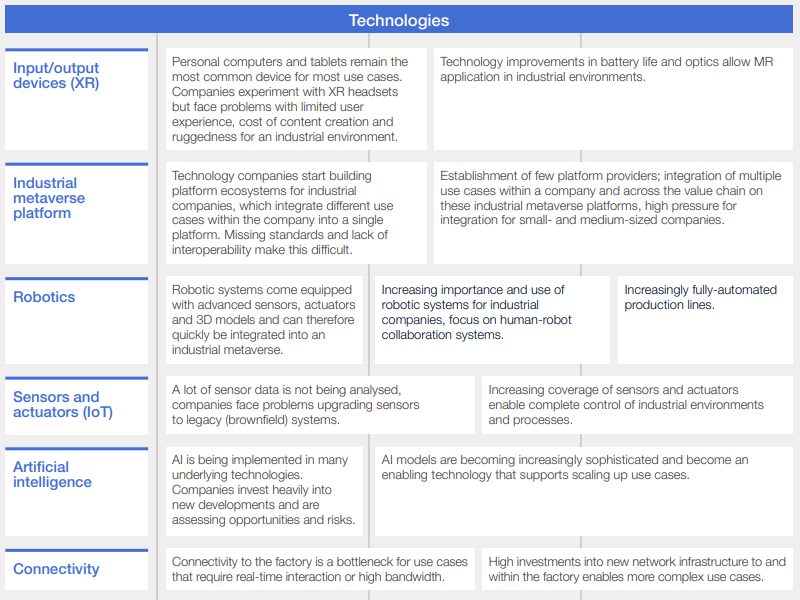
Beyond XR, some technology companies are working to implement industrial metaverse platforms that integrate different use cases. Moreover, the importance of robotics, sensors and actuators is expected to increase in the mid and long term as industrial environments become more virtually controlled and automated. Companies should develop and establish common standards in industry associations to ensure interoperability of the technologies and use cases.
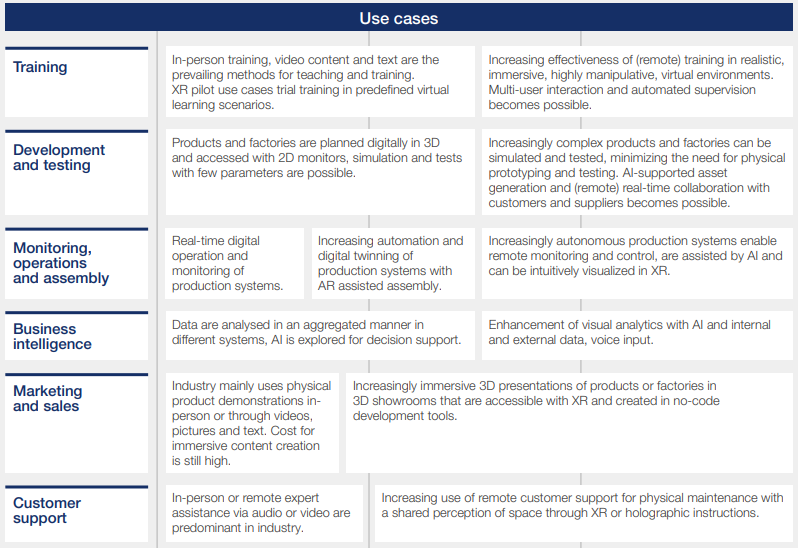
Actions for Companies
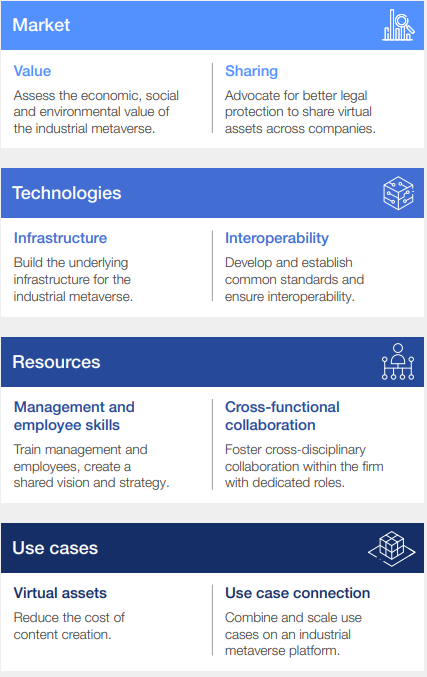
Industry leaders should consider whether to build virtual assets in-house or externally while considering the current high costs for content creation. Options that reduce the cost of virtual assets should be constantly assessed as they hinder widespread implementation. In addition, industry players should prepare for combining and scaling use cases across the organization.

